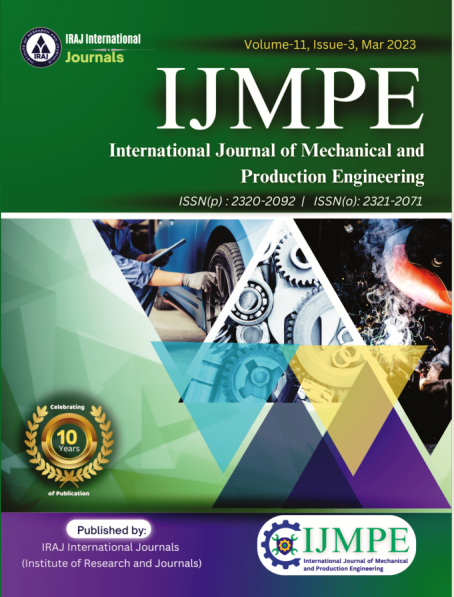Publish In |
International Journal of Mechanical and Production Engineering (IJMPE)-IJMPE |
 Journal Home Volume Issue |
||||||||
Issue |
Volume-4,Issue-1 ( Jan, 2016 ) | |||||||||
Paper Title |
Evaluation Of Displacement Fields In Gelatin And Al 2024 T3 Alloy Using Dic When Subjected To Low Velocity Impact | |||||||||
Author Name |
Shivaraj Yaranal, S Sathiyanaarayan, R A Savanur | |||||||||
Affilition |
M.Tech student, Department of Mechanical Engineering, BLDEA’S V.P. Dr.P.G.Halakatti College of Engineering and Technology, Vijayapur Senior scientist, Impact and Crash Worthiness research Facility, Structural Technologies Division, CSIR-National Aerospace Laboratory, Bangalore Professor, Department of Mechanical Engineering, BLDEA’S V.P. Dr.P.G.Halakatti College of Engineering and Technology, Vijayapur | |||||||||
Pages |
62-66 | |||||||||
Abstract |
Digital Image Correlation (DIC) has been used as a tool to determine the full-field displacements and strain fields. It is required that, for soft bodies like gelatin samples which are mainly used as a tissue simulants in impact studies in aerospace engineering, the measurement of displacements and strains under these loads be measured through a non-intrusive technique. An intrusive technique like strain gauge will result in erroneous measurement of strain as its stiffness is comparable with respect to that of gelatin. DIC provides such an opportunity for the measurement of displacements and strains without being in contact with the samples during testing. Hence DIC technique has been adopted in the present work and applied to both hard material (Aerospace Aluminum 2024 T3 alloy) and soft material (gelatin samples of 1G:2W and 1G:3W ratio) for the measurement of displacements and strains. An open source MATLAB code for DIC through the Normal Cross Correlation method was acquired. Due to the need of better correlation techniques which would take care of images with scaling effect and offset, different correlation criterion such as Zero-mean Normalized Sum of Squared Difference (ZNSSD), Squared Sum of Difference (SSD) and Zero-mean Sum of Squared Difference (ZSSD) have been implemented and compared these criterion in terms of their computational time and pixel resolution. This DIC technique has been validated by finite element analysis of low-velocity impact of gelatin samples. Two finite element solvers namely LSDyna and ABAQUS have been used for the simulation of LVI of gelatin samples by considering the Mooney-Rivlin as the material model for gelatin samples and it observed that the results from these FE analysis are well matched with the results of DIC for 1G:2W samples than 1G:3W samples. The Mooney-Rivlin solid considered as material model for the analysis of gelatin samples can be a better material model only for the gelatin sample with 1G:2W ratio and for 1G:3W gelatin sample this material model doesn’t hold good as the results obtained by DIC and FE analysis have more difference and error between them. Low-strain rate compression test conducted on Aerospace Aluminum 2024 T3 specimen of 10mmX10mm cross-section by using Split Hopkinson Pressure Bar. The resulting strains of this of low-strain rate compression test are compared with that obtained by DIC and it has been observed that, in this case also DIC results are well matched with experimental results.Overall, it is concluded that the DIC is a versatile technique which can be used for determining the displacements and strains of soft materials like gelatin and hard material like aerospace Aluminum 2024 T3 alloy. Keywords— Digital Image Correlation, low velocity impact, gelatin, Al2024 T3 alloy, SHPB LS-Dyna and ABAQUS. | |||||||||
| View Paper | ||||||||||